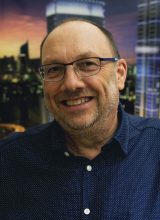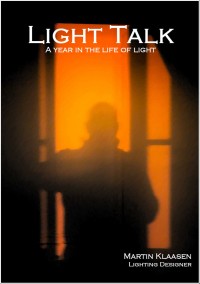The week that was…9-13th November
Perth, Weekend 14-15 November 2015;
Lighting design- the world tomorrow
The goings are getting slower and quite honestly with all my travel and other interests, my blogging is suffering, you may have noticed…I started my blog 6 years ago while attending PLDC in Berlin and with PLDC Rome just behind us and Xmas just around the corner it seems a good moment to take a break. I woke up this morning to the terrible events that unfolded in Paris last night which just reminds us all what world we are practicing our profession these days. With half my family living in Paris (thank god so far no-one seems affected) and Paris being one of my “home towns” these events bring us back to the harsh realities of this world with Charlie Hebdo still fresh in our minds…
Rather than giving you a day by day account of my life as a lighting designer, perhaps from now on in my weekly review I can tackle subjects that affects or relate to our profession in general. Here we go:
The world is changing
Over the coming weeks I will subsequently travel to China, Dubai, Tahiti, India, Malaysia and Indonesia with Vietnam and the Philippines knocking on my door to for project meetings before Xmas. While I am not changing my schedules because of these events, it does make you more vigilant and attentive to what happens around you and where you go…The aim of these terrorists, as the name already implies, is to create fear and terror in people’s minds, so giving in is virtually conceding victory to them.
It is amidst this world background that we have to keep focused on do our job and luckily this part of the world (Asia Pacific), seems relatively spared and “quiet”. It also relativises all the progress made in lighting technology and lighting design. With all the innovations and advances made, with all the potentials ahead it becomes rather trivial when the world crumbles down around you. As I am preparing my presentation paper for my upcoming guest speaking engagement in Dubai in 10 days’ time, I dug into the latest lighting and lighting design developments in support of my chosen subject of Smart Lighting Design. What is the future of lighting and lighting design and how smart is it?
From a waste economy
Of course there are the smart sensor systems that adapt the lighting to needs, where and when. But to me that is not really smart that is just another “gimmick” to further sales of products and systems. It is an economy model that is build around making, taking and wasting when the product or system has reached end of life (or more precisely has a critical component failing to work). Famously lamp manufacturers came together in the early part of last century to agree to limit incandescent lamp life to only 1000 hours after technological improvements had improved life from the initial 1500 hours to 2500 hours. It created fear of an oversaturated market where lamps could not be sold anymore…so lamps then were designed to fail. Today practically every product (lights specifically) are designed to fail (hence the limited warranty periods to “suit”). Initially the LED’s came out with a 100,000 hours lifespan claim, but that quickly changed to 50 or even 25,000 hours. Even worse, to compensate the longer LED life span LED fixtures are now designed such that you have to replace the WHOLE fitting even if one little component (usually the driver) fails. This is typical of the economic waste model that has the end user bear all the responsibility and costs while the manufacturer goes scot-free, earning money on the back of the consumer, creating waste our resources and pollutioning our environment in the process. It is time to rethink this…
To a circular economy
Some of you may have read about the latest initiatives where lighting is no longer sold as a product but as a service. The future is where you don’t buy a lamp, you buy lighting. Several schemes are in the process of development at the moment with the Philips “Pay per Lux” scheme probably the most well-known. While Philips cleverly is marketing this concept as being the innovators, my understanding is that it did not originate from Philips at all but that they were asked and suggested by environmental architects in Holland notably, with Philips only reluctantly agreeable to “look into it” and research the potential of the concept. The idea is that the manufacturer keeps full ownership of the lighting installation and the end user just pays for the light (lux) that it is using, a sort of monthly subscription with a predetermined contract period. Electricity bills are for the manufacturer as are any maintenance or repairs. At the end of the contract the manufacturer takes back the lighting installation with the idea to either re-use, repair, refurbish or recycle the materials and so creating a circular economy. The concept is a win-win for everybody; the user gets state of the art products and systems as it is in the manufacturer’s interest to minimise its costs which is only achieved by the best lighting performance, lowest energy consumption and longest life span. As an end user you don’t have to worry anymore, you have the amount of light where and when you want at a minimal capital outlay. Amsterdam’s Schiphol airport is currently pioneering the concept where the airport renovation has come with a “pay per lux” scheme for the next 15 years. Philips has taken full responsibility to provide the lighting installation (of course in coordination with the architects and interior designers) and the airport pays a pre-agreed monthly fee for a worry free up to standards lighting installation. There is another underlying thought to this concept and that is that the materials remain in possession of the manufacturer prompting and stimulating them to be innovative right from the product design stages in creating products, materials and components that are demountable, re-useable, and recyclable after usage protecting our environment and nursing the scarce resources of our planet in the process. Now that seems smart lighting design and we need to start integrating thinking that way as well!
Have a great weekend










 The long awaited book compilation of Martin's first year of blogging is available. Order now.
The long awaited book compilation of Martin's first year of blogging is available. Order now. Feedspot Top 100 Lighting Blogs
Feedspot Top 100 Lighting Blogs